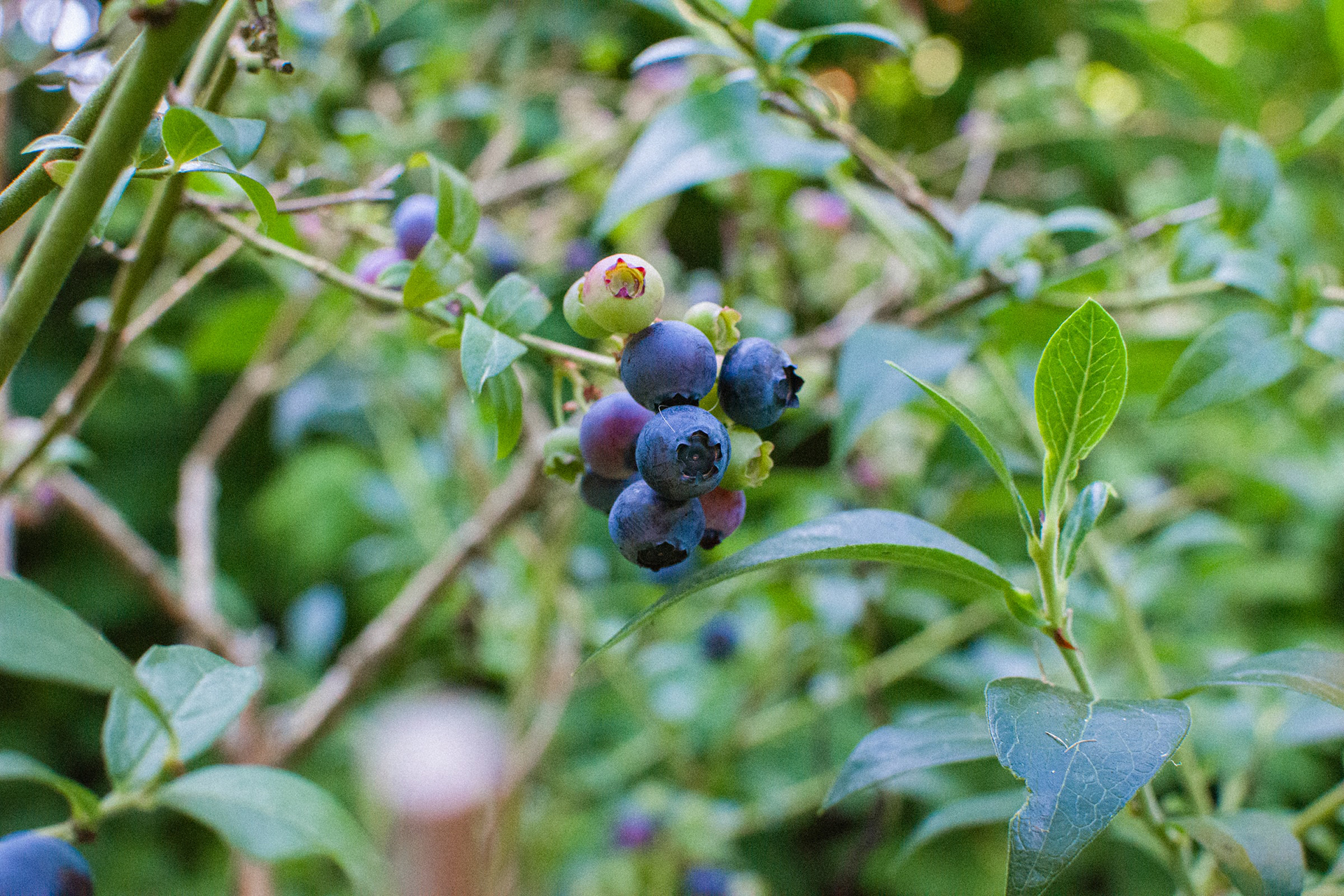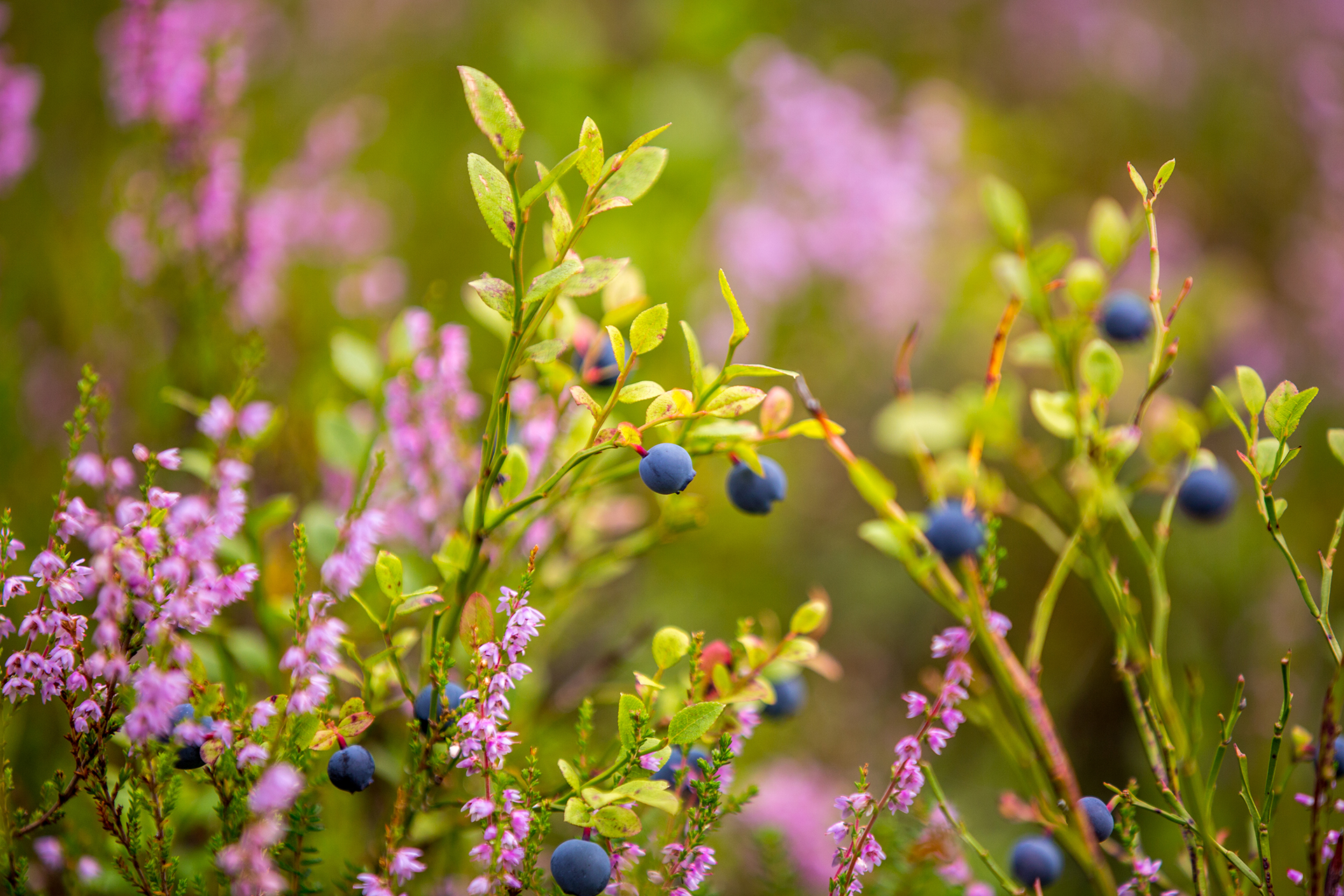How to grow blueberries – from cuttings or seed
Discover how to grow blueberries for the most delicious, space-efficient fruit that you can grow on your patio


Once you know how to grow blueberries, you’ll be planting bushes wherever you have a gap. These attractive shrubs are compact, so can be grown in containers if desired, and yield ambrosian fruit that is so much more than a breakfast staple.
Blueberries are low-maintenance plants, but do require the right conditions to grow. Get it right and you will be rewarded with a homegrown superfood that is rich in antioxidants, vitamins and disease-fighting phytoflavinoids.
While you will be blessed with ripe berries for only a few short weeks in the summer, the pleasure of picking and eating them will make it all worth the effort. So make space for blueberries in your kitchen garden ideas.
‘Blueberries are truly the luxury goods of the fruit world. They are famously acid loving, meaning that they must be grown in ericaceous compost that has a suitable pH or else they will sulk,’ says Alys Fowler in her book Eat What You Grow.
Good blueberry varieties to try are Duke, Spartan, Bluecrop, Bluegold, Top Hat, North Country, and Pink Lemonade.

How to grow blueberries
'Blueberries are easy to grow in acidic compost,' says gardening expert Leigh Clapp. The soil or potting mix should be at pH of 5.5 or lower. If you aren’t sure of your soil type, then invest in a test kit.
A good indication is if you already have acid-loving plants thriving in your garden, such as rhododendrons, azaleas and pieris.
Design expertise in your inbox – from inspiring decorating ideas and beautiful celebrity homes to practical gardening advice and shopping round-ups.
You can plant blueberries at any time of year, as long as the ground isn't frozen, though spring and fall are best.
'Plant blueberries in a sunny, sheltered spot – though they are tolerant of shade,' adds Clapp. They ideally need sunlight for at least half of the day.
Dig a hole just a little larger than the pot the plant was supplied in. You shouldn't add manure to the potting hole, as it is too alkaline, but can add ericaceous compost to help improve the soil. Firm in and water well.
Keep the plants well watered in the spring and summer, which is when the flowers and fruit are forming. Try to use rainwater exclusively, and only switch to tapwater when the water butt is empty, as it is too alkaline.
‘Feed with a rhododendron fertiliser,’ says Clapp. However, blueberries are sensitive to over-feeding, so do this only occasionally.
Blueberries can be grown as individual plants, but will crop better if they are able to cross-pollinate, so ideally you should plant another, different variety, close by.
Alternatively, you can grow blueberries in pots, in ericaceous compost.

How to grow blueberries from cuttings
Growing blueberries from cuttings is the most reliable method of propagation – aside from buying young plants.
Depending on the species, blueberries have either deciduous or evergreen leaves. Deciduous varieties – which shed their leaves in the fall – can be propagated from either softwood cuttings in late spring or semi-ripe cuttings in the summer. Evergreen blueberries should only be propagated from semi-ripe cuttings, taken in the summer.
If in doubt, assume the plant is evergreen and take your cuttings in the summer. It’s best to take a few cuttings, to increase your chances of success.
- To take semi-ripe cuttings, select healthy stems of fresh growth from this season that are supple but not too flimsy – avoiding those with fruit or flowers – and remove using a sharp, clean blade or scissors.
- If you are not ready to plant your cuttings immediately, then you can store them in a plastic bag in a cool, dark place for a few hours.
- Prepare a container filled with a potting mix of half peat moss and half perlite or sand.
- Trim your cuttings to about 6 inches long – cutting at an angle just below a leaf node – keeping them the right way up.
- Remove the lower leaves.
- Dip the bottom of the stems in hormone rooting power. This isn’t essential, but will improve your chances of success.
- Push the stems about halfway into the potting mix, spacing them at least 2 inches from each other.
- Water the mix well, and allow it to drain.
- Place the cuttings in a greenhouse, or cover with a plastic bag and position in a light, warm spot – but do not leave in direct sunlight or the cuttings will overheat.
- Check the cuttings regularly to ensure the potting mix is kept moist.
- After a couple of months, give the cuttings a very gentle tug – if there is any resistance, then they have started to root.
- Around 3 or 4 months after potting, your cuttings should have rooted sufficiently to be potted on to an ericaceous compost mix.
- You may find that some of your cuttings were not successful, but hopefully you will have enough to grow on as healthy plants.
- It will take at least two years for your new blueberry plants to fruit.

How to grow blueberries from seed
Growing blueberries from seed isn't difficult but requires patience, as the seeds take a long time to germinate, and it will be a while before you have any fruit.
The plants do not grow true from seed, so may not resemble the parent plant, but that makes it a fun experiment as you might just propagate a uniquely delicious variety.
For best results, buy reliable seeds from a nursery. However, you can extract them from blueberries with a little effort, and sow them indoors at any time of year.
- To extract seeds from shop-bought blueberries, it’s best that they have not been imported, or are organic, as imported berries may have been treated, which can prevent the seeds from germinating.
- Before extracting the seeds, you first need to freeze the blueberries for at least 3 weeks, which will simulate winter and stratify the seeds.
- When you are ready, defrost the berries and allow them to come to room temperature.
- Put the berries in a blender and half fill it with water, then blend them for about 10-15 seconds. You can mash them without a blender, but it will take longer.
- Let the mix sit for a few minutes, and the seeds will sink to the bottom. Scoop the pulp off the top, then pour the liquid through a fine sieve.
- You should be left with reddy blueberry seeds, which you can rinse before emptying onto newspaper or paper towel, and leave to dry.
- To sow your blueberry seeds, prepare a container filled with peat moss, and moisten it.
- Sprinkle your seeds on top and cover with a very thin layer of peat moss.
- Place the container in a sealed propagator, or cover with plastic wrap – to keep in the moisture – and position in a warm, bright place.
- It can take as long as 6-12 weeks for blueberry seeds to germinate. During this time, keep the potting mix moist, but not over wet.
- Once the first seeds begin to germinate, remove the cover.
- When seedlings are a couple of inches tall, thin out the weak ones.
- When they are large enough to handle, pot the seedlings on into an ericaceous potting mix, and plant out in the fall or spring after hardening off for a week or two.

How to look after blueberries
Blueberries are fairly low-maintenance plants, but do require regular watering and occasional feeding – around once a month for container plants, and 2-3 times a year for those grown in the ground.
Where possible use rainwater to water your blueberries, as tap water will raise the pH level of the soil.
Blueberries require little pruning, but need an occasional trim after they are a couple of years old. ‘A good bush should have one third old, one third middle aged and one third young stems,’ says Fowler.
‘Prune out anything that is dead, diseased, weak or twiggy, or any stems that are touching the ground. Remove a quarter of the oldest growth of mature plants to rejuvenate the plant.’
Mulch blueberry plants in the spring using composted bracken, pine needles or leaf mould, or use ericaceous compost.
Blueberries don't tend to struggle with pests or disease, but get rid of aphids and keep an eye out for powdery mildew. 'Birds also enjoy blueberries, so cover with a net as the fruits start to color,' says Clapp.
You can harvest blueberries in mid to late summer, once the berries have turned from green to a deep blue-purple. The fruit should easily pull away when ripe with a gentle tug and twist.
The berries will ripen gradually, so pick over the plant every few days.
What is the best way to grow blueberries?
The best way to grow blueberries is to plant young shrubs in acidic soil in either the ground or containers.
The best way to propagate them is through softwood or semi-ripe cuttings. This method is more reliable and easier than growing from seed, and will result in shrubs that match the parent plant.
Are blueberries easy to grow?
Blueberries are easy to grow, but success requires patience. The key thing is to plant them in acidic soil or ericaceous compost, and water regularly with rainwater until established.
How long does it take for a blueberry bush to produce fruit?
It takes around two years for a blueberry bush to produce fruit, and around four years before it will start cropping more heavily and reliably.
Where is the best place to plant a blueberry bush?
The best place to plant a blueberry bush is a sunny, sheltered spot. ‘Blueberries like sun or part shade, a sheltered position, no cold winds and well-drained by moisture-retentive soil,’ says Fowler.

Melanie has worked in homes and gardens media for two decades. Having previously served as Editor on Period Living magazine, and worked on Homes & Gardens, Gardening Etc, Real Homes, and Homebuilding & Renovating, she is now focusing on her passion for gardening as a Senior Editor at Gardening Know How. As a keen home grower, Melanie has experimented with pretty much every type of vegetable at some point – with mixed results. Often it is the simplest things that elude you, which may explain why she just can't seem to master zucchinis.